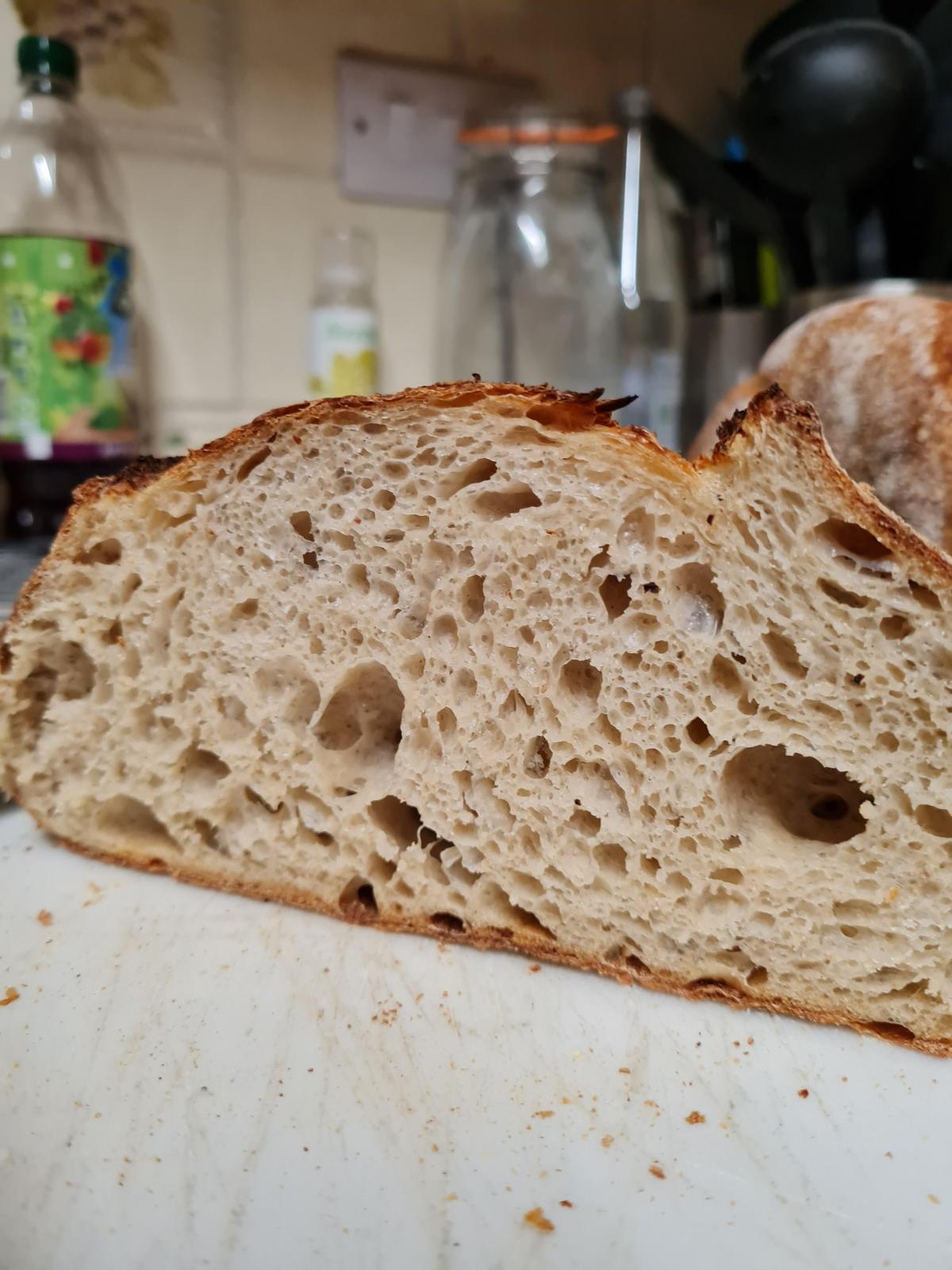
Eliminating larger holes

Hi All,
Its been a while since I've come on here asking for help, over the past 6 months or so I've been baking a lot of sourdough and have been making scrupulous notes, experimenting with formulas, temperatures and times etc etc. I've been getting consistently decent bread for a while now, but I've noticed my crumbs all contain a few larger holes in an otherwise fairly open even crumb. I was wondering if anyone has any advice on how to eradicate these on a consistent basis?
This loaf above is as follows for approx 680g:
70% strong white flour
30% khorasan
20% levain (fed 1:10:10 just past peak when mixed in)
2% salt
75% hydration
Method:
20min autolyse
Added salt/levain/final 30g water
Mixed in bowl approx 4mins, rest couple of mins then further 3mins mixing
Stretch and fold at 15, 30, 45, 60, 90
Coil fold at 120 and 150 (gentle)
Total bulk 3.5hrs approx 26.5c
Preshape and 30m rest
Shaped by folding bottom to middle, stretching sides out and overlapping each other. Pulling middle top down to bottom and then stitching from the ears down before gently rolling up and making some tension on top of loaf with bench knife/hands etc. Temp at this point approx 24c
1hr floor time before going into fridge at ~9c
12h cold retard
Baked in Dutch oven 250c with spray bottle for initial steam, 17mins lid on and 17mins lid off. Fully cooled before slicing.
My shaping involves a fair few overlaps and stitching so I'm wondering if that's the reason? Otherwise I'm delighted with the bread itself and bake so much I find myself giving it away to friends and family.
Any advice would be amazing!!
Thank you,
Anthony


Forget all forms of "folding" and after each rise give it a couple minutes of old fashioned kneading to degas. That is all. Enjoy!
Oops, except for the proofing rise!
Yes, the dough needs to be degassed after bulk fermentation. Remove the dough from the bulk fermentation container, stretch and spread it out on the work surface, then firmly pat and slap the dough with your hands against the work surface. Bruno Albouze has videos on YouTube for this. Then form, proof, score and bake as usual.